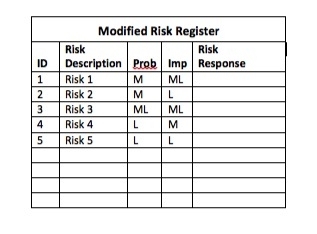- Complete a Needs Assessment
Determine what training your team and employees need, and want
A needs assessment is the first step in any training initiative. It involves taking a close look at the business and identifying the areas where employees need development. Once you know what areas need improvement, you can create a tailored training program that meets those specific needs.
Employee enagement is a key factor in learning and development. When employees are engaged, they're more likely to participate in training activities and apply what they learn to their work. One way to increase employee engagement is by using storytelling techniques in training programs. Stories are a powerful tool for teaching and engaging employees.
Focus on Soft Skills Development
The world of work is changing, and soft skills are becoming increasingly important. As a learning and development manager, it's important to focus on soft skills development. This means offering training programs that teach employees essential skills such as communication, problem-solving, and collaboration. - Identify Trainers including Vendors
Examine the Past Performance of Vendors and Solicit Proposals
When it comes to training and development, it's important to have the right trainers and vendors. But how do you identify the best ones? It can be a daunting task, but with a little bit of research, you can find the perfect fit for your team.
One way to identify trainers is by examining their past performance. Have they been successful in previous training initiatives? What was the feedback from participants? Another way to identify trainers is by soliciting proposals. This involves sending out a request for proposal (RFP) to several potential vendors. The RFP should outline the specific needs of your team, and vendors will then submit proposal that meet those needs.
Offer In-House Training Programs
In-house training programs are a great way to develop employee skills and knowledge. They allow employees to learn about company policies and procedures, as well as new technologies.
- Request a Budget AFTER You Have Proposals
- Schedule Classes
- Inform and Enroll Participants
Employees must know they are scheduled so they can plan their time appropriatey
One way to inform and enroll participants is by sending out invitations to the class. These invitations should include the date, time and location of the class, as well as a brief description of the training program. It's also important to set expectations for attendance. Employees should be aware of how many classes they are expected to attend and what will happen if they miss a class.
Finally, it's important to track progress. Managers should keep track of which employees have attended class and which employees are still missing assignments. By keeping track of these things, managers can ensure that all employees are getting the most out of their training programs.
To make an impact in the world of learning and development, you need to have the right tools and resources. And to get those tools and resources, you need a budget.
But getting a budget for learning and development can be difficult. Many managers struggle to make their case for increased spending on training. They may feel that their team is already stretched too thin or that there isn't enough money available. But if you can make a strong case for learning and development, you're more likely to receive the funding you need.
One way to make your case is by highlighting the benefits of training. Show how training can improve employee productivity, reduce turnover and boost morale. You can also point out how training can help employees stay up-to-date with new technologies and trends in th industry. By making a strong argument for learning and development, you're more likely to receive the funding you need to make an impact.
To get the most out of training, it's important to schedule classes in a way that works for both employees and managers. This involves finding a balance between employee needs and company goals.
When scheduling training classes, it's important to consider the needs of employees. Employees need time to attend class, complete assignments, and practice new skills. They also need time to ask questions and receive feedback from instructors.
At the same time, it's important to consider the needs of managers. Managers need time to plan class schedules, approve attendance, and track progress. They also need time to evaluate the effectiveness of training programs.
Finding a balance between employee needs and management needs can be difficult, but it's essential for successful training initiatives. By scheduling classes in a way that meets both sets of needs, you're more likely to see positive results in terms of employee productivity and company growth.
If you're looking to make an impact in the world of learning and development, then consider enrolling in one of our training programs. Our classes are designed to help employees learn new skills and stay up-to-date with industry trends. And our instructors are experienced professionals who can help you get the most out of your training.
When it comes to learning and development, it's important to think ahead. By planning and implementing these five tips, you're more likely to make an impact in 2023. So start planning now and see the positive results in the future.
 Most companies invest in training and development of staff for improved success, regardless of the industry. However,
Most companies invest in training and development of staff for improved success, regardless of the industry. However,  Our project management courses have been updated to align with the 6th edition of the Project Management Body of Knowledge (PMBOK®) guide. Every course description in the catalog includes a listing of the number of credits by organization. See inset for example of accreditations per course.
Our project management courses have been updated to align with the 6th edition of the Project Management Body of Knowledge (PMBOK®) guide. Every course description in the catalog includes a listing of the number of credits by organization. See inset for example of accreditations per course. Previously, we wrote about how resolving conflict often has the side benefit of building a cooperative bond — even loyalty — between the factions. As each side gains a deeper understanding of the others’ viewpoints, respect builds and morale improves. Cooperative, low stress interactions, create a fertile environment for productive brainstorming, ultimately boosting the health of your organization.
Previously, we wrote about how resolving conflict often has the side benefit of building a cooperative bond — even loyalty — between the factions. As each side gains a deeper understanding of the others’ viewpoints, respect builds and morale improves. Cooperative, low stress interactions, create a fertile environment for productive brainstorming, ultimately boosting the health of your organization. In Part 3 of this series, we’ll examine the five conflict styles that help people understand their own responses as well as diffuse conflict with others. Specifically, we’ll look at the five conflict styles that Kenneth W. Thomas and Ralph H. Kilmann identified and can be assessed in the Thomas-Kilmann Conflict Mode Instrument (TKI), a globally accepted, widely used diagnostic assessment for resolving conflict.
In Part 3 of this series, we’ll examine the five conflict styles that help people understand their own responses as well as diffuse conflict with others. Specifically, we’ll look at the five conflict styles that Kenneth W. Thomas and Ralph H. Kilmann identified and can be assessed in the Thomas-Kilmann Conflict Mode Instrument (TKI), a globally accepted, widely used diagnostic assessment for resolving conflict. I aspired to broaden my career and went back to school for a Masters in Leadership Development about 12 years ago. Through a confluence of introductions, opportunities and also being an adjunct instructor at Drexel University, I joined one of my cohort’s businesses, Merit Career Development. Initially, I began helping them with a new branding initiative, but in an “Ah Ha” moment we realized that I’d likely be a strong trainer for Merit, too. We were right. I have been running corporate trainings for Merit now for five years and I love it! But here’s the surprise: one of my favorite courses to facilitate, is Conflict Management (followed closely by Critical Thinking & Decision-Making.)
I aspired to broaden my career and went back to school for a Masters in Leadership Development about 12 years ago. Through a confluence of introductions, opportunities and also being an adjunct instructor at Drexel University, I joined one of my cohort’s businesses, Merit Career Development. Initially, I began helping them with a new branding initiative, but in an “Ah Ha” moment we realized that I’d likely be a strong trainer for Merit, too. We were right. I have been running corporate trainings for Merit now for five years and I love it! But here’s the surprise: one of my favorite courses to facilitate, is Conflict Management (followed closely by Critical Thinking & Decision-Making.)
 As the image to the left illustrates, participatory learning, especially using simulation for practice, provides the highest level of retention for training, second only to “teaching others.”
As the image to the left illustrates, participatory learning, especially using simulation for practice, provides the highest level of retention for training, second only to “teaching others.” Standard risk responses include Avoidance, Mitigation, Transference, and Acceptance (passive/active). At Merit, we developed a reporting process that would show that the risk factors were decreasing as the project progressed. Supplemented with suitable risk responses, the true reduction of risk probability occurs over time.
Standard risk responses include Avoidance, Mitigation, Transference, and Acceptance (passive/active). At Merit, we developed a reporting process that would show that the risk factors were decreasing as the project progressed. Supplemented with suitable risk responses, the true reduction of risk probability occurs over time. The Probability and Impact Matrix is one of the tools that we recommend in a risk management strategy. It is superimposed with risks that are labeled or numbered as in the above example. “Red” area risks were uniquely documented on a trending month-to-month basis such that it could be seen “driving” toward zero.
The Probability and Impact Matrix is one of the tools that we recommend in a risk management strategy. It is superimposed with risks that are labeled or numbered as in the above example. “Red” area risks were uniquely documented on a trending month-to-month basis such that it could be seen “driving” toward zero.
 Studies show that lack of EQ may limit a person’s ability to achieve results. Lower EQ scores correlate with lower merit pay increases, lower job satisfaction and more burnout. Managers’ and supervisors’ EQ scores correlate with their performance ratings.
Studies show that lack of EQ may limit a person’s ability to achieve results. Lower EQ scores correlate with lower merit pay increases, lower job satisfaction and more burnout. Managers’ and supervisors’ EQ scores correlate with their performance ratings. We all have specific words or phrases that are steeped in emotion. During the 1960s and 70s, the term “nuclear power” raised a great deal of emotion—both positive and negative. Similarly today we have emotionally charged words or phrases such as “gun control”, terrorism, and consumer privacy. It is important to recognize one’s own emotionally charged phrases and stop the emotional hijacking that is about to take place.
We all have specific words or phrases that are steeped in emotion. During the 1960s and 70s, the term “nuclear power” raised a great deal of emotion—both positive and negative. Similarly today we have emotionally charged words or phrases such as “gun control”, terrorism, and consumer privacy. It is important to recognize one’s own emotionally charged phrases and stop the emotional hijacking that is about to take place.